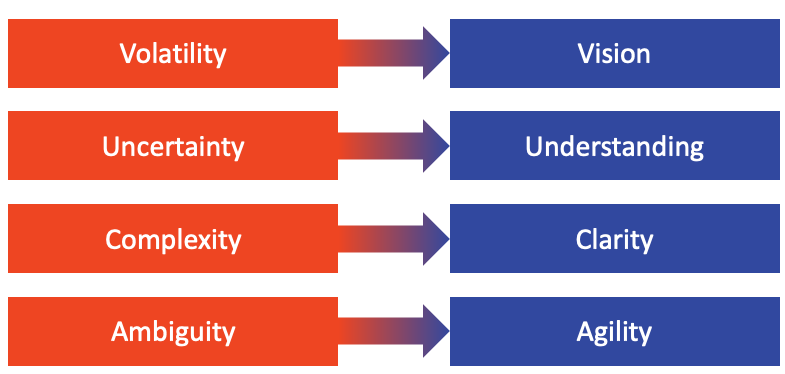Winning Service Strategies: How to Stay Ahead in a Changing Market
Drive growth by solving emerging customer needs, while enhancing existing The service landscape for B2B manufacturers is evolving rapidly. While many...

In a volatile landscape, the ability to adapt your service strategy is paramount. You should nimbly adjust to emerging insights and market dynamics through agile methodologies and regular strategy reviews, ensuring sustained growth and a competitive edge.
Sticking to a static service strategy in an ever-changing digital landscape can be like navigating a ship through a storm with an outdated map. In both scenarios, stagnation isn't just a risk; it's almost guaranteed. So, how can your service leadership and innovation teams stay agile and ready to pivot?
In today's fast-paced environment, the challenges are numerous and ever-changing. Emerging technologies, evolving customer needs, and fluctuating market dynamics make it challenging for organisations to stick to a set service strategy. Adapting your strategy to navigate these shifts is often easier said than done.
Success in this terrain demands more than a solid strategy; it requires an agile and adaptable approach to executing that strategy. Being agile and flexible is not about buzzwords or trends; they're imperatives for making your service strategy future-proof. Without these qualities, even the best-laid plans can quickly become obsolete, leaving your organisation scrambling to catch up.
So, how do you build the momentum for an agile and adaptable service strategy execution? How do you lead your team to adjust and realign as you gather new insights, measure progress, and face unexpected challenges? This article will guide you through the key elements that will help you adapt and win in this dynamic landscape.
By focusing on the crucial aspects of an agile and adaptable service strategy execution, we aim to offer you a roadmap for success. The journey ahead promises opportunities for growth and innovation, so read on to explore how you can unlock them.
Navigating the complex waters of service transformation is no small feat, and your service leadership and innovation teams face various challenges that can hinder the successful execution of your service strategy.
Firstly, let's consider the external factors. The speed of technological innovation is dizzying. Just as you think you've integrated the latest tools or systems, a new wave of disruptive technologies appears on the horizon. Being agile and adaptable isn't just a "nice-to-have"; keeping pace and making the most of emerging opportunities is essential. Equally challenging are the ever-changing customer expectations. Today's empowered customers are demanding more and continually evolving in what they consider valuable, further complicating the task of sticking to a fixed service strategy.
Inside the organisation, the hurdles are equally daunting. One significant roadblock is the lack of cross-functional engagement. Departments often operate in silos, making rallying everyone around a unified service strategy difficult. Misaligned resources are another stumbling block. Despite the best intentions, teams may work at cross-purposes, diluting the effectiveness of the strategy execution. Ineffective management of progress can lead to delays, cost overruns, and, ultimately, a loss of faith in the strategy.
Beyond these tangible issues lies a more abstract, yet equally critical set of challenges. An organisation that is resistant to change or rigid in its strategic approach can be the most formidable obstacle. Such a mindset undermines the very essence of agility and adaptability. Without a culture that encourages flexibility and embraces change as an opportunity rather than a threat, even the most visionary service strategy will struggle to see the light of day.
In summary, recognising and addressing these multi-dimensional challenges is crucial for your service leadership and innovation teams to truly excel. Failing to do so could leave your service strategy not just ineffective but obsolete. The stakes are high, but the rewards of mastering agile and adaptable service strategy execution are still higher. This article guides navigating these complexities, so let's delve into the solutions that can turn these challenges into stepping stones for success.
In service strategy execution, agility and adaptability are not just buzzwords but differentiators that can make or break your organisation's success. Let's explore the high stakes involved in your service leadership and innovation teams.
Being agile and adaptable in your service strategy execution offers numerous advantages. For starters, you can seize new opportunities that arise from technological advancements or shifts in customer behaviour. This proactive approach allows you to stay ahead of the curve rather than just keep up. Another benefit is the acceleration of growth, especially for your advanced services. By swiftly adapting to new market insights and trends, you gain a competitive edge that can translate into increased revenue and customer loyalty.
Moreover, agility and adaptability strengthen your overall market position. They enable you to be the go-to solution provider for new and existing customers, enhancing your brand's reputation and influence. In the grand scheme, these qualities set you up to lead the digital service transformation in your industry. Your capacity to adapt quickly to change and execute your strategy efficiently will attract customers and talented professionals who want to be part of a forward-thinking organisation.
On the flip side, the absence of agility and adaptability can have dire consequences. One immediate risk is stagnation. When you can't adapt to new developments, you miss out on opportunities that could have propelled your services to the next level. This inability to move swiftly and effectively means you're likely to fall behind more agile and adaptable competitors. As they innovate and capture market share, you'll play catch-up, a position no organisation wants.
Furthermore, poor agility and adaptability can negatively impact employee engagement. Motivation plummets when teams see that their hard work isn't translating into progress because the strategy is too rigid or outdated. This decline in morale can lead to decreased productivity and, ultimately, a less competitive organisation.
The stakes are high, but the choice is clear. Mastering the arts of agility and adaptability in your service strategy execution is not just an option; it's a necessity for long-term success.
To set the stage for agile and adaptable service strategy execution, your service leadership and innovation teams need a robust framework. The following vital elements can act as your guiding stars in this journey.
Before diving into the tactical aspects, it's crucial to understand the landscape in which you're operating. The concept of VUCA—Volatility, Uncertainty, Complexity, Ambiguity—captures the essence of today's business environment. A solid vision for the future becomes your anchor in this sea of constant change. It offers a steady point towards which all your strategies and actions are aimed, providing a sense of direction that can help you navigate through VUCA conditions. With a clear vision, you can more effectively judge which adjustments are necessary to keep your strategy on course.
Once the vision is clear, the next step is adopting methodologies that allow adaptability and agility. Here, setting good Objectives and Key Results (OKRs) is crucial. These OKRs serve as verifiable milestones that guide your strategy towards its ultimate goal. They act as signposts, helping you identify when adjustments are needed in real time.
Regular review meetings at different organisational levels are essential to ensure these OKRs stay aligned with your vision and are effectively driving your strategy. Weekly reviews can involve project managers and team leads to ensure that tactical objectives are met, and any roadblocks are quickly addressed. Monthly reviews could involve middle management to discuss broader progress and identify any strategic shifts needed. Quarterly reviews should include senior leadership to assess alignment with long-term objectives and possibly make significant adjustments to the strategy. Annual reviews allow the highest level of leadership to revisit the overarching vision and make necessary realignments.
These periodic reviews allow you to make data-driven decisions, drawing on the latest insights and developments to fine-tune your strategy. As a result, you can be proactive rather than reactive, adapting in real time to new opportunities and challenges.
Combining a strong vision with these adaptive strategy methodologies gives your service leadership and innovation teams the tools they need for agile and adaptable service strategy execution. It turns the daunting challenges a VUCA world poses into exciting opportunities for growth and innovation.
In an environment marked by rapid technological advances and ever-changing customer expectations, the need for agility and adaptability in service strategy execution has never been greater. Your service leadership and innovation teams can't afford to have a rigid approach. Mastering the art of adapting to new insights and challenges in real time is essential. It allows you to seize new opportunities, grow your advanced services, and maintain a competitive edge in the market.
If you recognise the importance of these traits for your service strategy, it's time to act. Start by assessing your current methodologies and openness to change. Implement regular review meetings at various organisational levels to align your strategy with your overarching vision and objectives. This proactive approach will set the foundation for a more agile and adaptable future, positioning you for ongoing success in today's complex landscape.
The Service Transformation Summit on Mastering Service Strategy Execution covered the content of this article and more, such as:
This Summit, which took place on March 6-7, 2024, was a unique opportunity to deepen your understanding of these topics, connect with industry leaders, and engage in enriching discussions about real-world cases of your like-minded peers.
Subscribe for the our Impulse Letter
With regular updates about service news, trends and best practices.

Drive growth by solving emerging customer needs, while enhancing existing The service landscape for B2B manufacturers is evolving rapidly. While many...

One of the key challenges confronting manufacturers today, as they embark on their service transformation journey, is building strong service...

Implementing a multi-faceted strategy in service transformation is vital for accelerating pace and sustaining momentum. Through stakeholder...